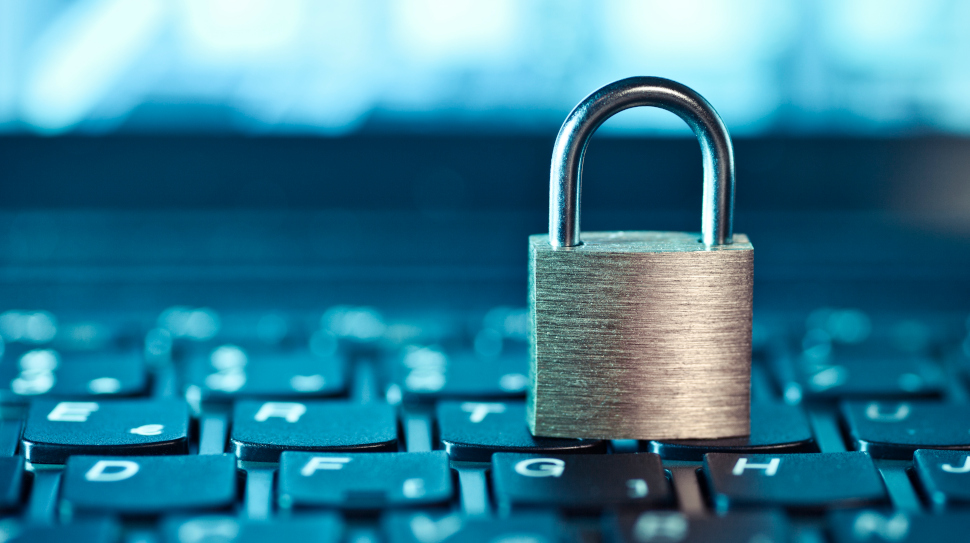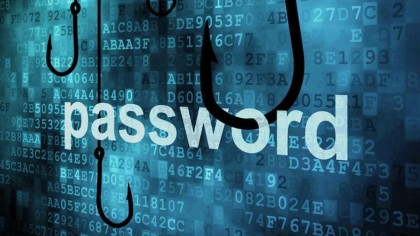How to choose a secure password?
Passwords are vital, but how should we select them?

In today's digital age, where our personal and professional lives are increasingly intertwined with online services and accounts, the importance of secure passwords cannot be overstated. Weak or easily guessable passwords leave us vulnerable to cyber threats like identity theft, financial fraud, and data breaches.
Secure passwords are the first defense against unauthorized access to sensitive information, including financial records, personal communications, and confidential data. Cybercriminals are constantly developing sophisticated techniques to crack passwords, making using strong and unique passwords for each account imperative.
A compromised password can have far-reaching consequences, from personal inconvenience and financial loss to corporate data breaches and reputational damage. Strong passwords protect our accounts and contribute to the overall security of the systems and networks we interact with.
By implementing secure password practices, we can significantly reduce the risk of falling victim to cyber-attacks and ensure the confidentiality and integrity of our digital identities. In an increasingly connected world, taking password security seriously is crucial in safeguarding our personal and professional lives from malicious actors.
- We've put together a list of the best password managers on the market
- These are the best password recovery solutions
- Check out our roundup of the best business password management software

Understanding password strength
A strong password is the first defense against unauthorized access to your accounts and personal information. A truly secure password should have several key characteristics:
Length: Longer passwords are exponentially more difficult to crack than shorter ones. Aim for a minimum of 12 characters, but the longer, the better. Passwords of 16 characters or more are ideal.
Complexity: A strong password should include various character types: uppercase letters, lowercase letters, numbers, and special characters (e.g., !@#$%^&*). The greater the variety of characters, the more challenging it is for attackers to guess or brute-force the password.
Get daily insight, inspiration and deals in your inbox
Sign up for breaking news, reviews, opinion, top tech deals, and more.
Randomness: Your password should be a random combination of characters without discernible patterns, dictionary words, or personal information. Avoid using common phrases, song lyrics, or easily guessable sequences like "password123."
The more random and unpredictable your password is, the harder it becomes for cybercriminals to crack it through various attack methods, such as dictionary attacks, brute-force attacks, or social engineering tactics.
Avoiding common password mistakes
Creating a secure password is crucial to protect your online accounts from unauthorized access. However, many people make common mistakes that compromise their password security. One of the most prevalent mistakes is using personal information, such as names, birthdates, or addresses, as passwords. These details are often readily available or easily guessable, making them an easy target for hackers.
Another common pitfall is using dictionary words or common phrases as passwords. Hackers frequently employ dictionary attacks, systematically trying every word in the dictionary to crack passwords. Even slight modifications like capitalizing the first letter or adding a number at the end may not provide sufficient protection against such attacks.
Additionally, many users use patterns or sequences on their keyboards, such as "qwerty" or "123456." These patterns are well-known and easily guessed by attackers, rendering them ineffective as secure passwords.
It's also essential to avoid reusing the same password across multiple accounts. If one account is compromised, all other accounts using the same password become vulnerable. Each account should have a unique, strong password to minimize the risk of a widespread breach.
By avoiding these common mistakes and following best practices for password creation, you can significantly enhance the security of your online accounts and protect your sensitive information from unauthorized access.

Password managers and generators
Password managers are software applications designed to securely store and manage all your passwords in an encrypted vault. They allow you to create strong, unique passwords for each account, eliminating the need to remember or write them down. Most password managers also include password generators that can create random, complex passwords according to your specified criteria (length, character types, etc.). This ensures your passwords are as strong as possible while removing the burden of creating them yourself.
Password generators are tools that create random passwords based on the parameters you set, such as length, character types (uppercase, lowercase, numbers, symbols), and other rules. They help create strong, unique passwords when you don't have access to a password manager or want a one-time password. However, you'll need to securely store the generated passwords, which is where password managers come in handy.
Both password managers and generators are valuable tools for improving your overall password security. Password managers act as a centralized, encrypted vault for all your login credentials. At the same time, generators help you create passwords that are virtually impossible to crack through brute-force attacks.

Creating a memorable but secure password
One of the biggest challenges with secure passwords is creating something strong and memorable. While truly random passwords are the most secure, they can be tough to remember. Fortunately, there are techniques for creating passwords that are both secure and easier to recall.
One effective method is to use passphrases instead of traditional passwords. A passphrase is essentially a longer password made up of multiple words. For example, "correct-horse-battery-staple" is a passphrase that is much more secure than a single word but can still be memorable with a simple mnemonic. When creating a passphrase, aim for four or more random words and include a mix of cases, numbers, and symbols.
Another technique is to take a memorable sentence or phrase and turn it into a password. For instance, "My dog Buddy loves chasing squirrels!" could become "Md8lcs!". This allows you to create a secure password based on something personally meaningful, more manageable, and accessible. You can also use acronyms or abbreviations from a favorite book, movie, or song lyric. For example, "TwasTheBestOfTimes, ItWasTheWorstOfTimes" could be shortened to "TtBoT, ItWtWoT." Adding numbe." symbols, and mixed cases further strengthen the password.
Ultimately, the key is finding a balance between security and memorability that works for you. Don't sacrifice too much security for the protection of memorization, but do explore techniques that can help you create passwords that are both strong and relatively easy to remember.
Multi-factor authentication
Multi-factor authentication (MFA) is an essential security measure that protects your online accounts beyond just a password. With MFA, you need to provide two or more forms of authentication to verify your identity, making it much harder for unauthorized individuals to access your accounts, even if they have your password.
The most common form of MFA involves using a one-time code sent to your mobile device or generated by an authenticator app in addition to your password. This ensures that even if your password is compromised, an attacker cannot access your account without physical access to your secondary authentication method.
MFA significantly reduces the risk of account takeovers, phishing attacks, and other forms of identity theft. It's essential for high-value accounts, such as email, banking, and other financial services, as well as any accounts that contain sensitive personal or business information.
While setting up MFA may seem like an extra step, its added security is well worth the minor inconvenience. Many online services now offer MFA as an option, and some even require it for added security. Enabling MFA is crucial in protecting your online identity and data from cyber threats.

Password rotation and management
Regularly rotating your passwords is crucial to protecting your accounts from potential breaches or unauthorized access. Even the most robust passwords can become vulnerable over time, especially if they are exposed to data breaches or targeted by sophisticated hacking attempts. Changing your passwords periodically reduces the window of opportunity for attackers to gain access to your accounts.
Regarding password rotation, the standard recommendation is to change your passwords every 60 to 90 days for critical accounts, such as email, banking, and other sensitive online services. However, this timeframe may vary depending on the level of risk and the sensitivity of the information being protected. You may consider rotating passwords every six months or annually for less critical accounts.
Managing multiple passwords across different accounts can be daunting, especially if you follow the best practice of using unique passwords for each account. This is where password managers come into play. Password managers are secure applications that store all your passwords in an encrypted vault, allowing you to access them with a single master password or biometric authentication (e.g., fingerprint or facial recognition).
Using a password manager, you can generate strong, random passwords for each account without remembering them individually. Password managers also offer features like auto-fill, which automatically enters your login credentials on websites, and secure password sharing, which allows you to share passwords with trusted individuals or team members safely.
When rotating passwords, it's essential to follow a systematic approach to ensure that you update all relevant accounts. Start by creating a list of all your accounts and prioritizing the most critical ones. Then, update the passwords individually, ensuring you don't reuse old passwords or patterns. After updating a password, update it in your password manager to keep your records up-to-date.
Enabling multi-factor authentication (MFA) whenever possible is also a good practice. MFA adds an extra layer of security by requiring a second form of authentication, such as a one-time code sent to your phone or a biometric factor, in addition to your password. This way, even if your password is compromised, an attacker still needs the additional authentication factor to access your account.
Regularly rotating your passwords and using a password manager to manage multiple accounts securely mabe inconvenientce. Still, it's a small price to pay for the peace of mind that comes with knowing your online accounts and sensitive information are well-protected against unauthorized access and potential breaches.
Protecting passwords from theft
Passwords are the keys to your digital life, and keeping them safe from prying eyes is crucial. Even the most robust password can be compromised if it falls into the wrong hands. Here are some tips to protect your passwords from theft:
Never Share Your Passwords: Treat your passwords like your most valuable possessions. Never share them with anyone, not even close friends or family members. Legitimate organizations will never ask for your password over the phone, email, or instant messaging.
Beware of phishing scams that try to trick you into revealing your passwords. Be wary of unsolicited emails, text messages, or phone calls asking for your login credentials, even if they appear to be from a legitimate source. Always verify the authenticity of the request before providing any sensitive information.
Use Secure Connections: When entering your passwords, use a secure connection, such as HTTPS (Hypertext Transfer Protocol Secure). Look for the lock icon in your browser's address bar, which indicates that your connection is encrypted and protected from eavesdropping.
Enable Two-Factor Authentication: Two-factor authentication (2FA) adds an extra layer of security by requiring a second verification form, such as a one-time code sent to your phone or a biometric factor like a fingerprint or facial recognition. Enable 2FA whenever possible for an additional line of defense against unauthorized access.
Keep Your Devices Secure: Protect your devices with strong passwords, encryption, and up-to-date security software. Avoid using public computers or unsecured Wi-Fi networks to access sensitive accounts, as these can be prime targets for password theft.
Be Cautious with Password Managers: While password managers can be convenient for storing and managing your passwords, they also introduce a single point of failure. If a password manager is compromised, all your passwords could be at risk. Choose a reputable password manager and use a strong master password to protect your vault.
Following these best practices can significantly reduce the risk of stealing your passwords and compromising your online accounts and personal information.
Organizational password policies
Robust password policies are crucial for organizations to safeguard their sensitive data, systems, and networks from unauthorized access and cyber threats. A comprehensive password policy should outline clear guidelines and requirements for creating, managing, and updating passwords across the organization.
Strong organizational password policies should mandate complex passwords that combine uppercase and lowercase letters, numbers, and special characters. These policies should also enforce minimum password length requirements, prohibit easily guessable passwords (such as dictionary words or personal information), and restrict password reuse across multiple accounts or systems.
Regular password rotation is another essential aspect of organizational password policies. Requiring employees to change their passwords periodically, typically every 90 days or less, can help mitigate the risk of password compromises and minimize the potential damage caused by stolen or leaked credentials.
Furthermore, organizations should implement multi-factor authentication (MFA) as an additional layer of security for accessing critical systems and applications. MFA combines something the user knows (like a password) with something they have (such as a hardware token or a one-time code sent to their mobile device), making it significantly more difficult for attackers to gain unauthorized access.
Effective password policies should also address password storage and transmission protocols. Passwords should be securely hashed and salted before storage and transmitted over encrypted connections to prevent interception and theft.
Organizations should also provide regular training and awareness programs to educate employees on the importance of password security, best practices for creating strong passwords, and the risks associated with poor password hygiene. This can help foster a culture of security awareness and encourage employees to protect the organization's assets actively.
By implementing robust password policies and enforcing them consistently across the organization, businesses can significantly enhance their overall cybersecurity posture and reduce the risk of data breaches, system compromises, and other security incidents.
Password security in the future
As technology continues to evolve, so will the methods we use to secure our digital identities. In the future, we can expect to see a shift away from traditional password-based authentication towards more advanced and secure alternatives.
One emerging trend is biometric authentication, which relies on unique physical characteristics such as fingerprints, facial recognition, or iris scans to verify a user's identity. Biometrics offers a more convenient and secure alternative to passwords, as they are virtually impossible to replicate or share accidentally.
Another promising development is passwordless authentication, which eliminates the need for passwords. Instead, users can authenticate using push notifications, hardware security keys, or mobile device-based authentication. This approach reduces the risk of password-related vulnerabilities and simplifies user authentication.
As quantum computing becomes more powerful, traditional encryption methods may become vulnerable to attacks. To address this, researchers are working on developing quantum-resistant encryption algorithms that can withstand the computational power of quantum computers. These algorithms will be crucial in ensuring the future security of sensitive data and communications.
Overall, the future of password security lies in embracing innovative technologies that offer greater convenience, security, and resilience against emerging threats. While passwords will likely remain in use for some time, the trend is towards more robust and user-friendly authentication methods that better protect our digital identities.
Bryan M. Wolfe is a staff writer at TechRadar, iMore, and wherever Future can use him. Though his passion is Apple-based products, he doesn't have a problem using Windows and Android. Bryan's a single father of a 15-year-old daughter and a puppy, Isabelle. Thanks for reading!
